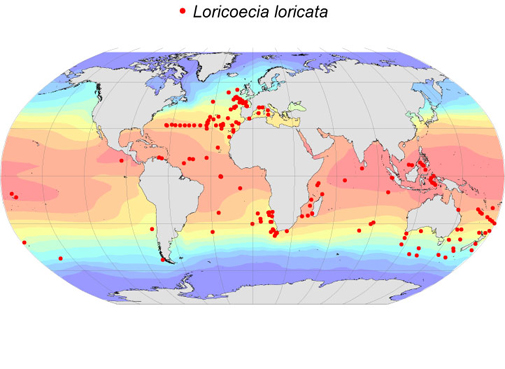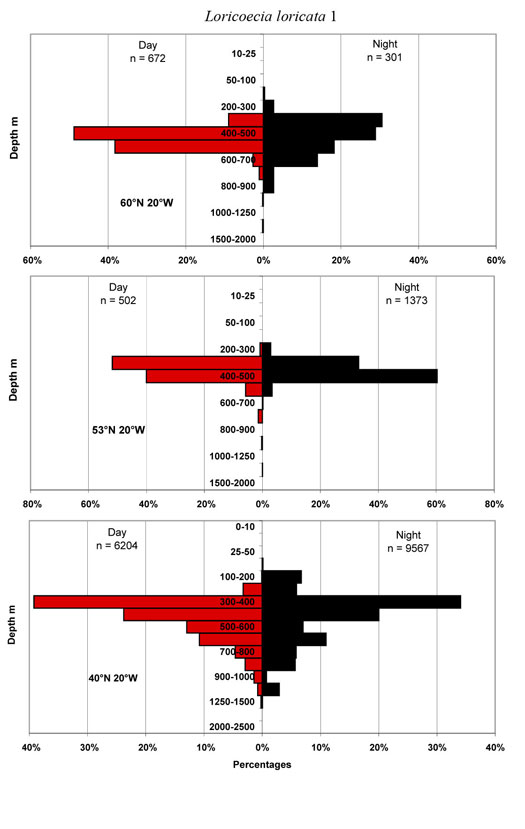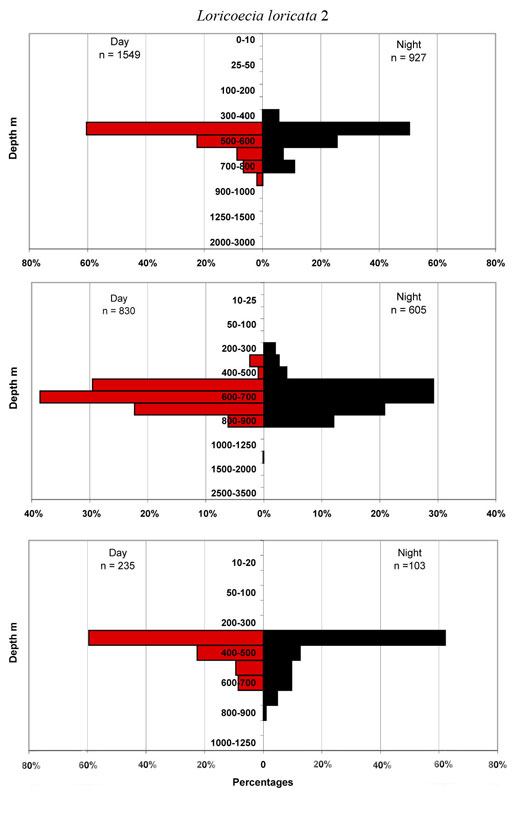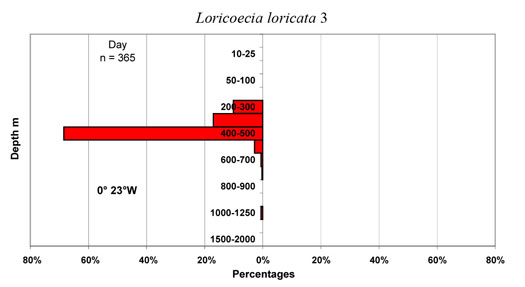Atlas of Atlantic Ostracods
Taxon details
Loricoecia loricata (Claus, 1894)
- Order:
- MYODOCOPA
- Suborder:
- Halocypridina
- Family:
- Halocyprididae
- Subfamily:
- Conchoecinae
- Size range (females):
- 1.8-2.1 mm
- Size range (males):
- 1.6-1.9 mm
- Depth:
- mesopelagic
Notes
478 records
This species was originally described from 32°N in the North Atlantic. Claus (1894) originally named it Conchoecissa loricata, although it is clearly unrelated to Conchoecissa armata (=imbricata), the species, with which he first established that particular genus (Claus 1890). Müller (1906) placed in his ‘loricata group’ together with L. ctenophora and tentatively Pseudoconchoecia serrulata. The basis for this grouping was the presence of lateral glands opening at the side of the right asymmetrical gland. Poulsen (1973) proposed the genus Loricoecia for these two very similar species in Müller's group and split off P. serrulata, which he placed in a new genus (together with P. concentrica). Müller (1906) also described loricata minor, a small subspecies (1.5-1.7mm) from tropical latitudes in both the Atlantic and Indian Oceans, but this subspecies has not been reported since.
At temperate latitudes in the North Atlantic loricata is often subdominant in the halocyprid populations at depths of 300-900m. It tends to have a shallower range at high latitudes in the north and a deeper range towards the equator. It does not appear to be a diel vertical migrant.
| Bermuda | n | Mean mm | s.d. | Range mm |
|---|---|---|---|---|
| Female | 90 | 1.95 | 0.073 | 1.78-2.14 |
| Male | 58 | 1.79 | 0.064 | 1.60-1.92 |
| A-1 | 219 | 1.39 | 0.076 | 1.20-1.52(1.62) |
| A-2 | 130 | 0.98 | 0.056 | 0.82-1.12 |
| A-3 | 119 | 0.72 | 0.033 | 0.60-0.80 |
| 44°N 13°W | n | Mean mm | s.d. | Range mm |
|---|---|---|---|---|
| Female | 220 | 1.93 | 0.077 | 1.76-2.12 |
| Male | 212 | 1.78 | 0.055 | 1.66-1.90 |
| A-1 | 910 | 1.40 | 0.041 | 1.28-1.52 |
| A-2 | 1270 | 0.98 | 0.034 | 0.82-1.08 |
| A-3 | 932 | 0.71 | 0.031 | 0.60-0.80 |







